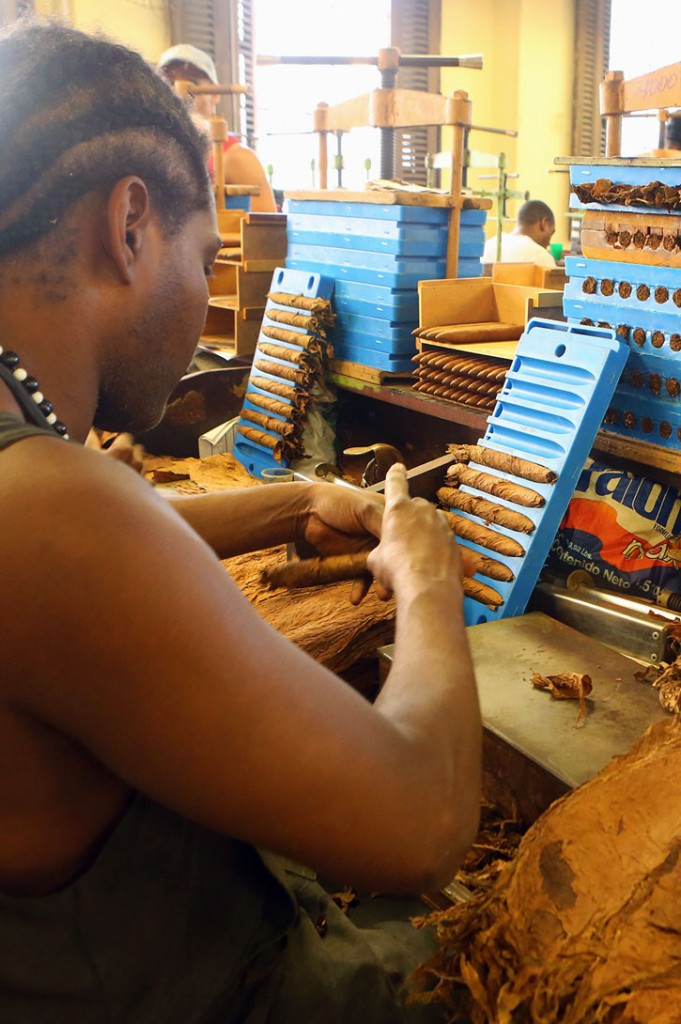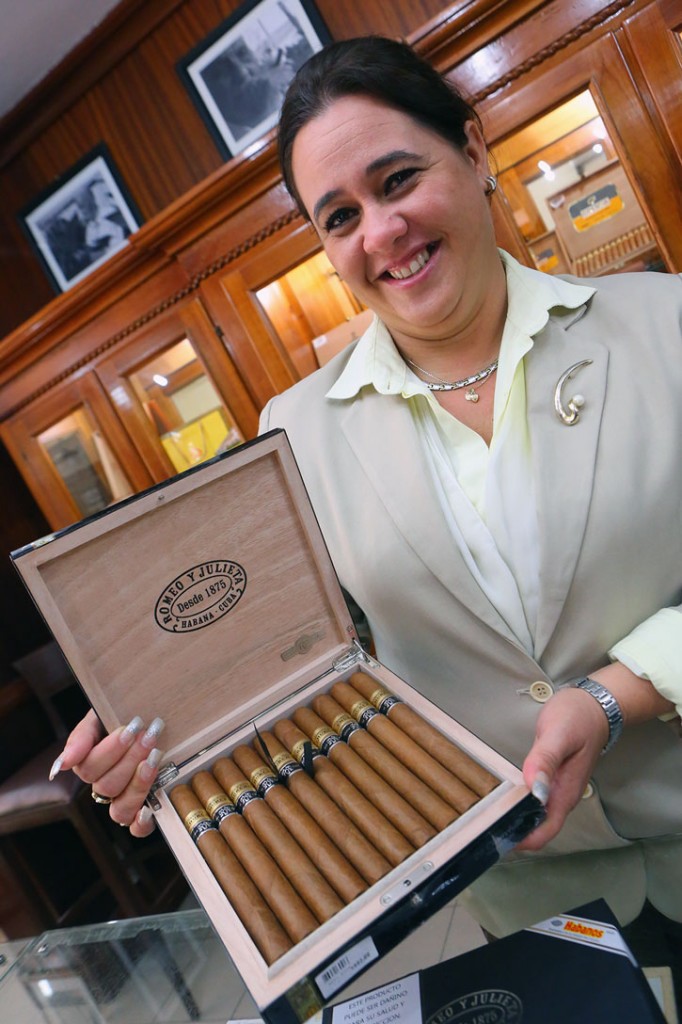
Cigar roller at Fábrica de Tabaco H. Upmann. Photo © Christopher P. Baker.
The torcedor chooses two to four filler leaves, which are rolled into a tube and then enveloped by the binder leaves to make a rough-looking “bunch.” This is then placed with others in a mold that is screwed down to press each cigar into a solid cylinder.
Next, the torcedor selects a wrapper leaf, which he or she trims to size. The “bunch” is then laid at an angle across the wrapper, which is stretched and rolled around the “bunch,” overlapping with each turn. Finally, a piece of wrapper leaf the size and shape of a quarter is cut to form the cap; it is glued (using flavorless tragapanth gum, made from Canadian pine) and twirled into place, and the excess is trimmed.
The roller ties cigars of the same size and brand into bundles of 50. These are then fumigated in a vacuum chamber. Quality is determined according to eight criteria, such as length, weight, firmness, smoothness of wrappers, etc. Professional smokers then blind test the cigars for aroma, draw, and burn.

A Romeo y Julieta sales rep displays fine Cuban cigars. Photo © Christopher P. Baker.
Once fumigated, cigars are placed in humidors for three weeks to settle fermentation and remove any excess moisture. The cigars are then graded according to color and then shade. A trademark paper band is then put on. Finally, the cigars are laid in pinewood boxes, with the lightest cigar on the right and the darkest on the left. A thin leaf of cedar wood is laid on top to maintain freshness, and the box is sealed with a green-and-white label guaranteeing the cigars are genuine Havanas, or puros habanos (today the terms puro and habano are synonyms for cigar).
Excerpted from the Sixth Edition of Moon Cuba.